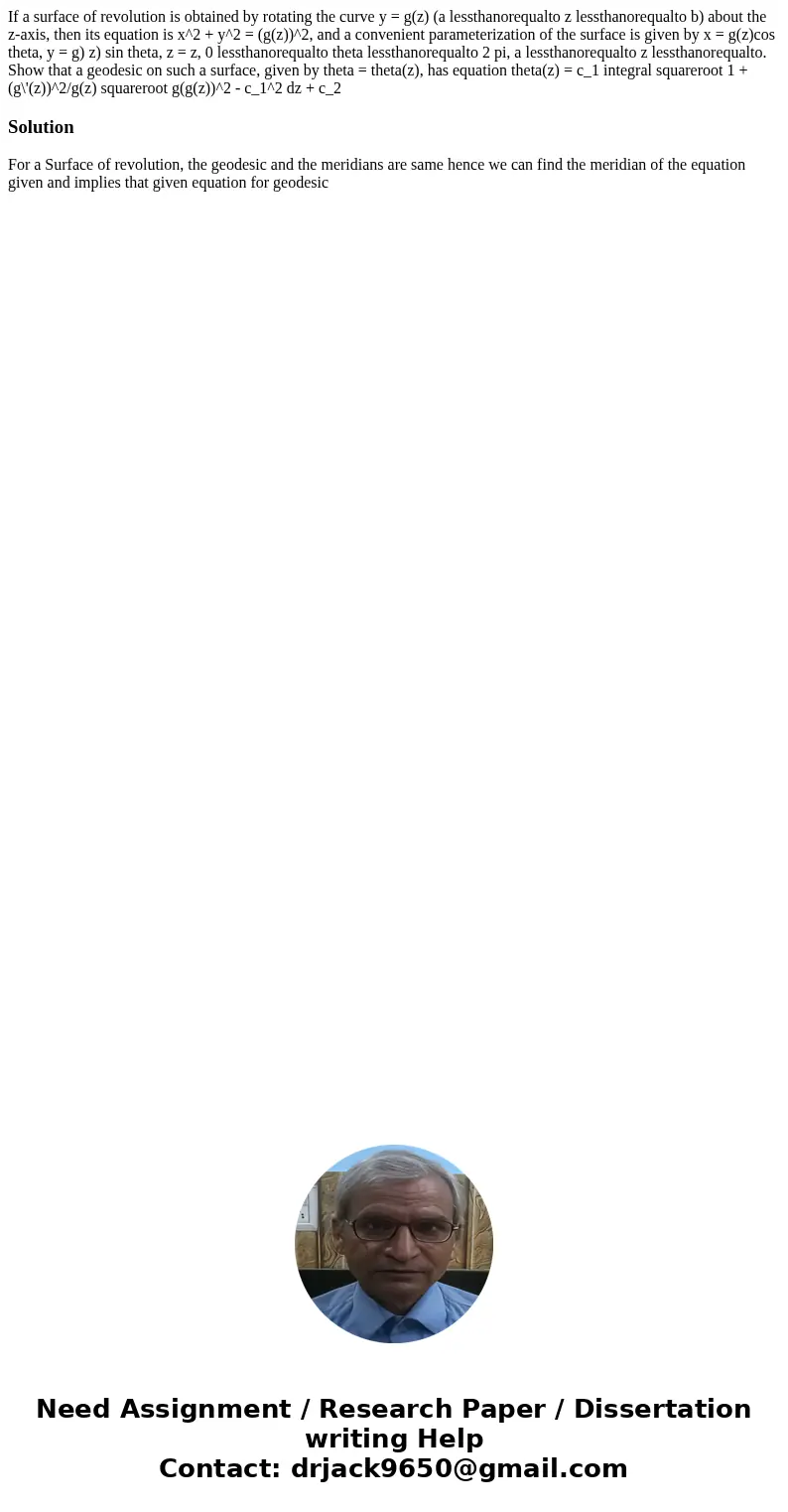If a surface of revolution is obtained by rotating the curve
If a surface of revolution is obtained by rotating the curve y = g(z) (a lessthanorequalto z lessthanorequalto b) about the z-axis, then its equation is x^2 + y^2 = (g(z))^2, and a convenient parameterization of the surface is given by x = g(z)cos theta, y = g) z) sin theta, z = z, 0 lessthanorequalto theta lessthanorequalto 2 pi, a lessthanorequalto z lessthanorequalto. Show that a geodesic on such a surface, given by theta = theta(z), has equation theta(z) = c_1 integral squareroot 1 + (g\'(z))^2/g(z) squareroot g(g(z))^2 - c_1^2 dz + c_2
Solution
For a Surface of revolution, the geodesic and the meridians are same hence we can find the meridian of the equation given and implies that given equation for geodesic

 Homework Sourse
Homework Sourse